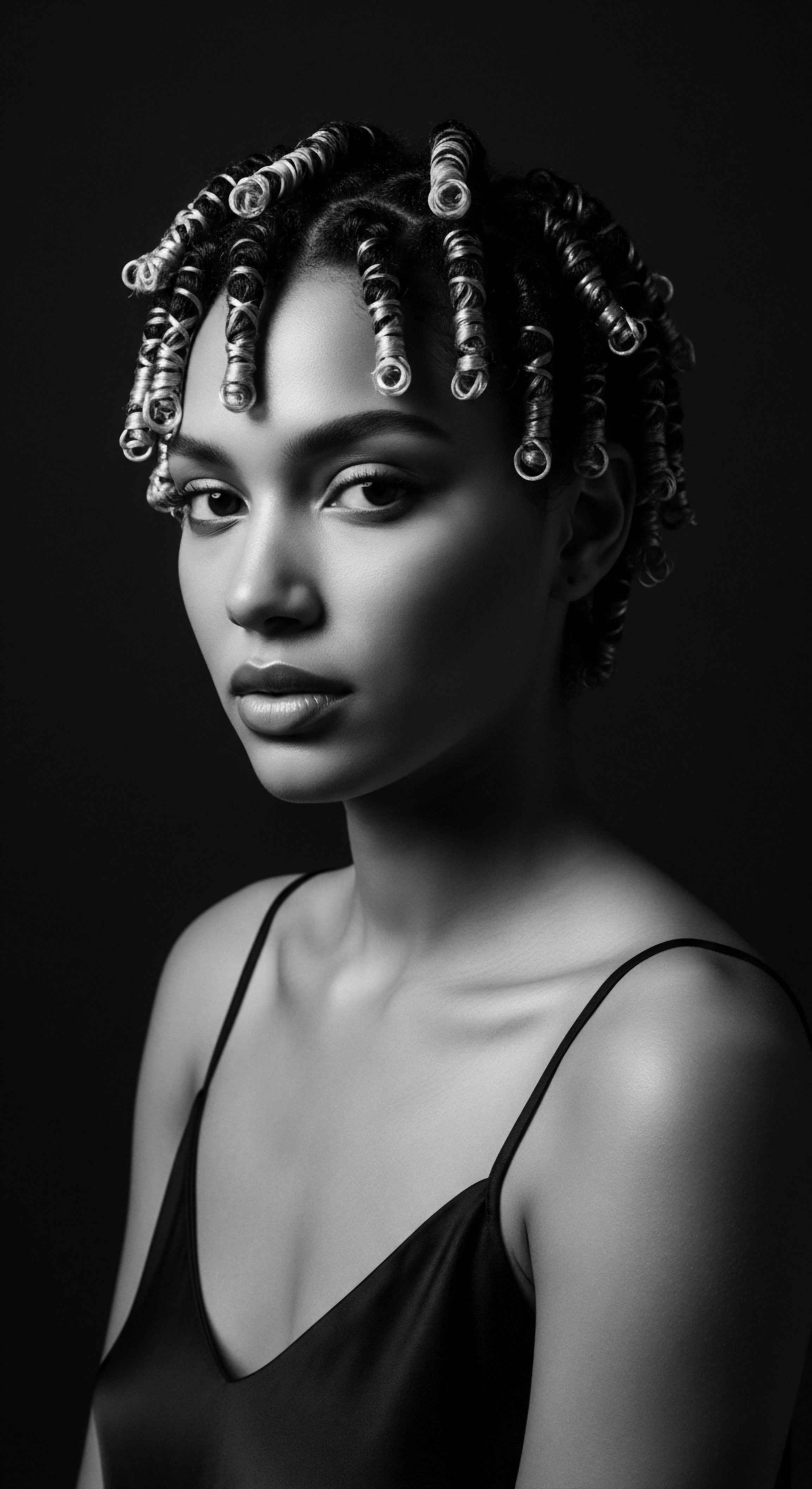
Roots
To stand before a mirror, tracing the coiled architecture of one’s own hair, is to touch a living chronicle. For those whose lineage stretches back to the vastness of Africa, a single strand of textured hair holds more than mere protein and pigment; it carries the weight of ages, the whispers of ancestors, and the unyielding pulse of defiance. It is a testament to survival, a quiet declaration against erasure.
This journey begins not with a question of why textured hair became a sign of Black resistance, but how it always was a repository of heritage, a deep well of belonging that oppression sought, unsuccessfully, to dry. We look to the elemental biology and ancient practices, the very echoes from the source, to uncover how this rich legacy stood firm against forces aiming to diminish it.

Echoes from the Source
Centuries before the transatlantic displacement, African societies understood hair not simply as an adornment, but as a map of the soul, a social lexicon, and a spiritual conduit. In pre-colonial Africa, hairstyles communicated a vast array of information ❉ a person’s age, marital status, social standing, ethnic affiliation, and even religious beliefs. The Yoruba people, for instance, regarded the head as the most elevated part of the body, a place where the spiritual world connected with the physical realm.
Braided styles, carefully crafted, could send messages to the gods, signifying a dialogue between the earthly and the divine. This communal and ceremonial aspect meant that hair care was often a shared activity, a gathering of kin and friends, strengthening bonds and preserving cultural identity.
The very structure of textured hair, with its unique coiling patterns, was seen as a gift, a distinct marker of identity rooted in ancestral lands. Understanding this primal connection to the self and community reveals the depth of the subsequent assault. When the abhorrent slave trade began in the fifteenth century, one of the first acts of dehumanization was often the forcible shaving of hair. This act aimed to strip individuals of their identity, sever their connection to their heritage, and dismantle their sense of self.
It was a deliberate, violent attempt to obliterate the spiritual and social markers carried in their hair. Yet, even in the depths of this dehumanization, the spirit of textured hair persisted.
Textured hair, from its earliest moments, was a living record of identity, social standing, and spiritual connection in African societies.
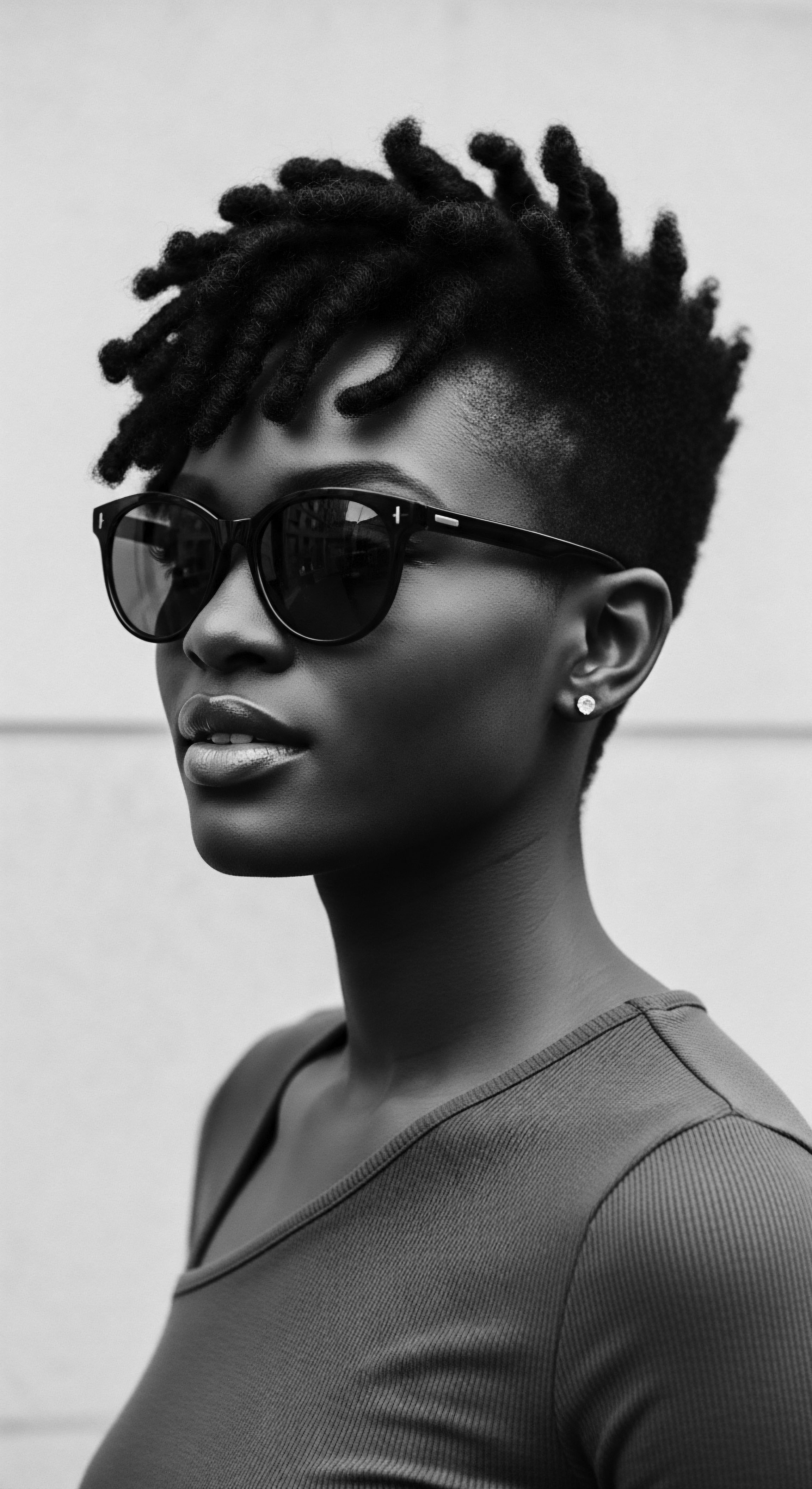
Anatomy of Identity and Heritage
The distinct qualities of textured hair, often characterized by its elliptical shape and unique curl patterns, are a biological legacy that carries with it a particular relationship to care and styling. Unlike hair with a more circular cross-section that grows straight, the very curvature of textured hair strands influences how moisture travels along the shaft and how oils distribute from the scalp. This anatomical distinction meant ancestral practices were finely tuned to these specific needs, utilizing natural butters, oils, and plant extracts for nourishment and protection.
Hair classification systems, while attempting to categorize these varied curl patterns, sometimes miss the historical nuances that shaped both their appearance and their care. Traditional names for styles or hair states, often passed down through generations, hold a meaning that a simple numerical or letter grading cannot capture. The traditional language of hair, often spoken through the hands of those who style it, tells a story of survival and adaptation, a testament to the ancestral knowledge that recognized and honored the intrinsic qualities of each strand.
The cycles of hair growth, too, take on a different resonance when viewed through the lens of heritage. Beyond the science of anagen, catagen, and telogen phases, these cycles speak to resilience. Hair grows, sheds, and regenerates, a continuous cycle that mirrors the perseverance of a people.
Environmental factors and traditional nutritional practices, often rooted in indigenous plant knowledge, would have shaped the health and vitality of hair across generations. This ancient understanding of hair’s relationship to diet and environment reinforces its status as an outward sign of inner wellness and continuity, further intertwining its biological reality with its cultural significance.
The journey from the continent to the diaspora brought new environmental factors and immense hardship, yet the hair, in its very structure and growth, carried the memory of its origins. This biological foundation, wedded to ancient practices of care and recognition, became the bedrock upon which new forms of resistance would be built.
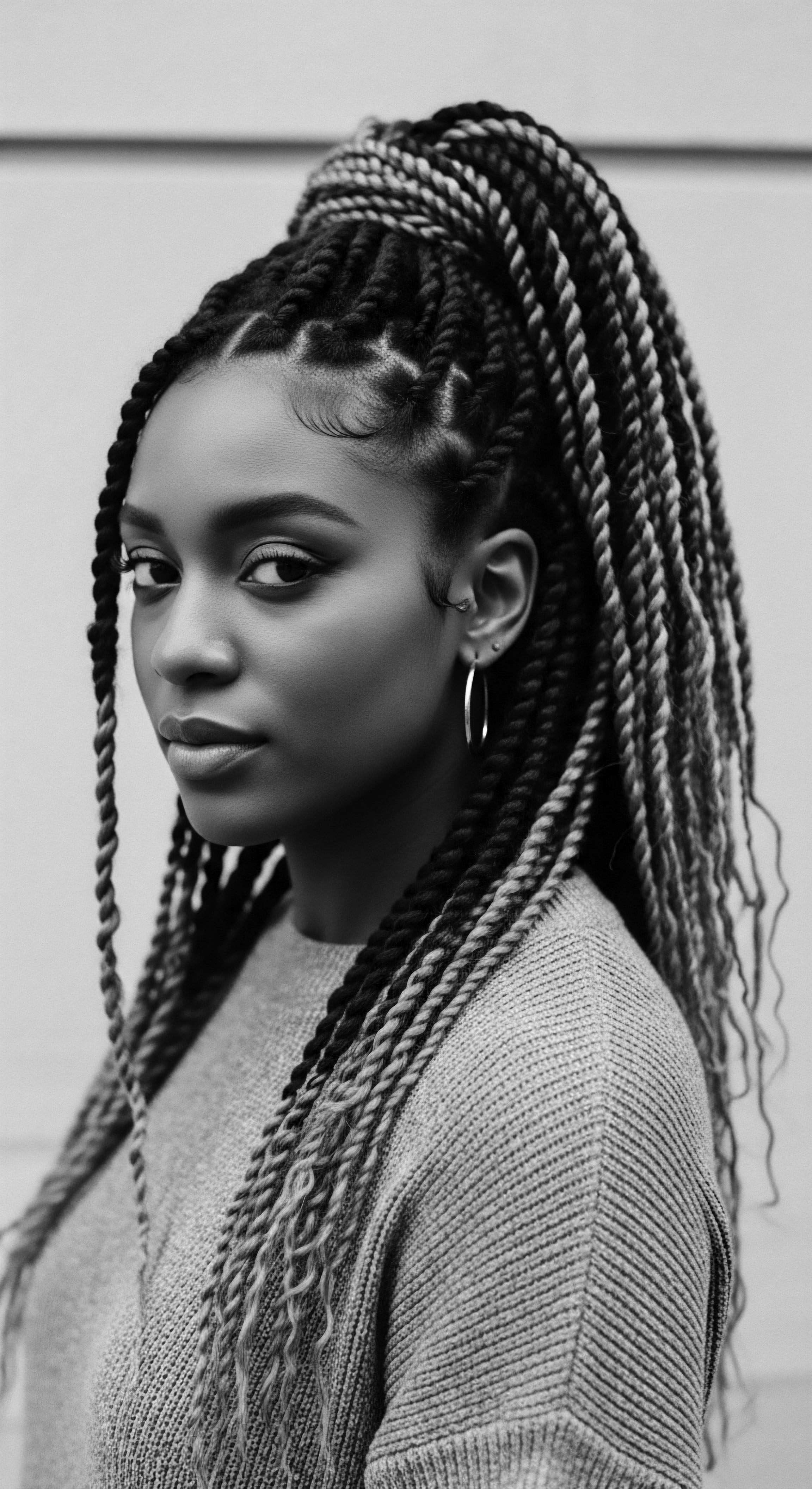
Ritual
The transformation of textured hair into a symbol of Black resistance is inseparable from the rituals of styling and care that define it. These practices, inherited and reinvented, became acts of assertion against a world that sought to denigrate Afrocentric aesthetics. From ancient communal braiding sessions to the subtle defiance of a carefully sculpted coil, each choice of style and each application of a traditional ingredient became a statement, a preservation of identity, and a quiet, sometimes overt, act of self-sovereignty.

Traditional Techniques and Cultural Statements
During the brutal era of enslavement, hair became a canvas for survival and coded communication. Enslaved African women, stripped of almost everything, found ways to keep their heritage alive through their hair. One particularly poignant historical example involves the braiding of rice seeds into hair by West African women forcibly transported to the Americas. This practice, often taught by descendants of the Maroon people, permitted the secret carrying of sustenance from their homeland, thereby preserving not only life but also a vital part of their agricultural heritage.
Ethnobotanist Tinde van Andel’s research highlights that some varieties of rice still carry the names of the women who bore them to freedom, a powerful testament to their ingenuity and survival. This act, rooted in deep ancestral knowledge of agriculture and hair styling, stands as a quiet but profound act of resistance against total cultural eradication.
The complexity of cornrows, for instance, transcended mere adornment; they could be maps of escape routes for enslaved individuals seeking freedom. The very patterns, intricate and specific, were designed to convey information about paths, landmarks, and meeting points, all hidden in plain sight on the heads of those who defied their bondage. This profound adaptation transformed a traditional styling technique into a tool of liberation, a silent language of defiance that slave masters, who often described natural hair with derogatory terms, could not comprehend.
The Tignon Laws of 1786 in Louisiana provide another window into hair as a site of defiance. These laws compelled free Black women to cover their elaborately styled hair with headwraps, intended to visually assert their status as closer to enslaved women than to White women and to restrict their societal influence. However, these women, with remarkable spirit, transformed the imposed headwraps into ornate, vibrant statements of fashion and identity, turning an instrument of oppression into a display of cultural richness and resilience. This historical example shows how acts meant to diminish identity were met with creative, stylish forms of counter-assertion, solidifying hair as a symbol of persistent selfhood.
From concealed rice seeds to coded maps in braids, hair became a silent language of freedom during enslavement.
The legacy of these adaptive styling practices continues to resonate. Styles like Bantu Knots, Fulani Braids, and Locs, all with ancient African origins, are today worn not only for their aesthetic appeal but as a conscious connection to ancestral practices and a visible celebration of Black heritage. These styles, once deemed “unprofessional” or “unkempt” by Eurocentric beauty standards, have been reclaimed as badges of pride, challenging prevailing societal norms and asserting an Afrocentric standard of beauty.
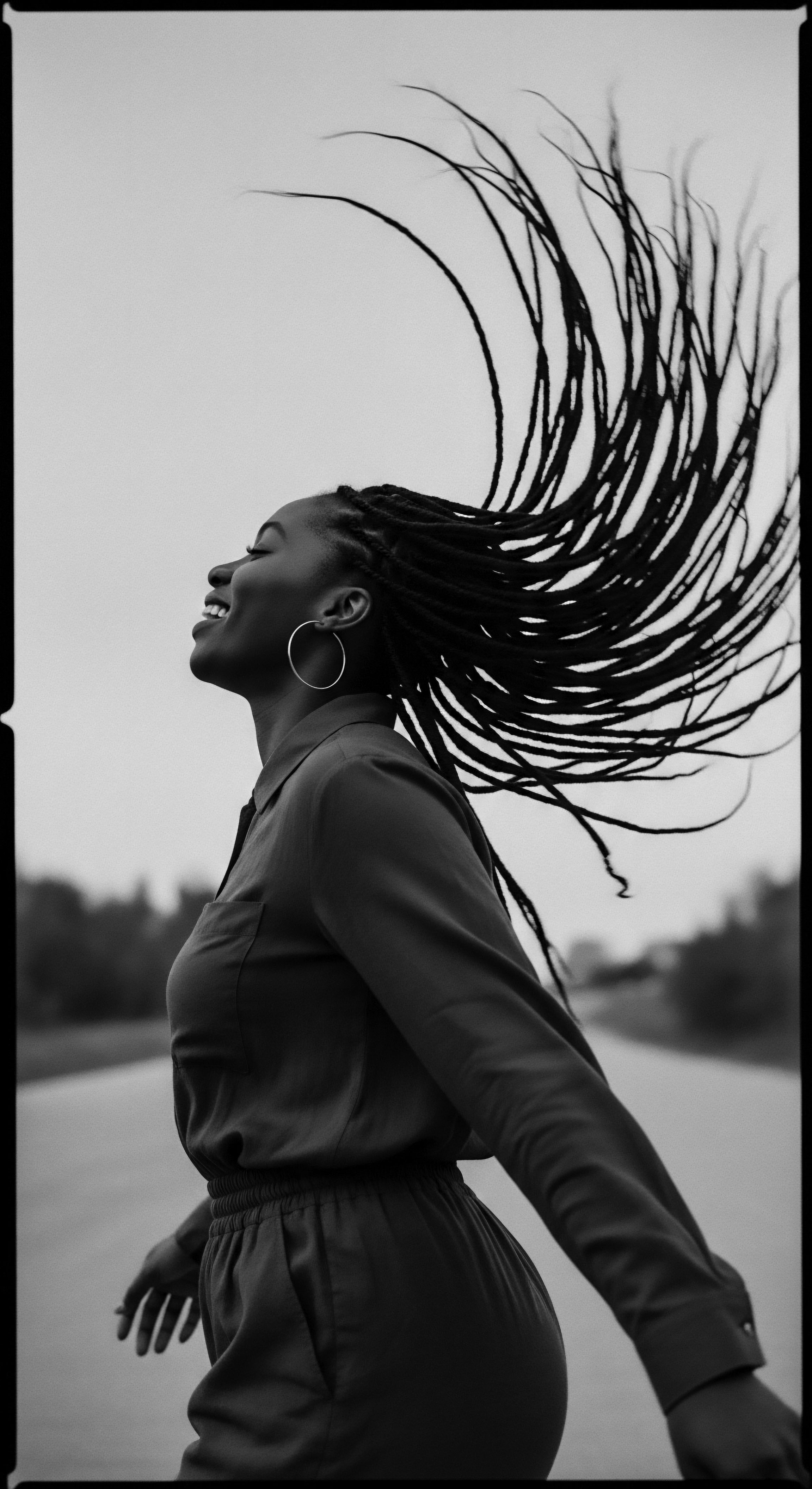
Tools and Transformations Through Time
The tools utilized in textured hair styling have evolved alongside the historical context, yet their purpose of tending and shaping remains. In ancient times, combs carved from wood or bone, and natural fibers for extensions, were central to care and creation. These tools were not just implements; they were often handcrafted items, sometimes imbued with spiritual significance, handled with reverence during long communal sessions of hair grooming. The warmth of human hands and the patience of shared moments were as much a part of the styling process as any tangible object.
The advent of the hot comb in the late 19th and early 20th centuries, popularized by figures like Madam C.J. Walker, represented a complex moment in this heritage. While offering a means to straighten hair in alignment with Eurocentric beauty standards, it also provided a path to economic independence within the hair care industry for Black women.
The act of altering hair texture, often to avoid discrimination and improve social or economic prospects, became a common choice for many. Yet, this choice also highlighted the constant pressure to conform, a pressure that textured hair, in its natural state, defiantly resisted.
The mid-20th century saw a powerful resurgence of natural styling as a political statement. The Black is Beautiful movement of the 1960s and 1970s saw the widespread adoption of the Afro, a hairstyle that became a proud and unmistakable symbol of Black pride, self-acceptance, and a rejection of oppressive beauty ideals. The Afro pick, once a simple tool, became an icon of Black nationalism, a visible marker of solidarity and cultural affirmation. This era solidified textured hair as an overt sign of collective resistance, moving from quiet acts of survival to bold declarations of identity on a public stage.
Today, the range of styling possibilities for textured hair is vast, extending from elaborate protective styles with deep historical roots to modern, natural definition techniques. The choices made about hair reflect personal expression, yet they carry the weight of a powerful heritage. Every coil, curl, and kink worn openly today carries the echoes of those who braided seeds of freedom and those who wore their Afros as crowns of pride.
| Era Pre-Colonial Africa |
| Traditional Styling Aspect Intricate braids, adornments, spiritual styling. |
| Connection to Resistance/Heritage Signified status, tribe, spirituality, community bonds. |
| Era Enslavement Period |
| Traditional Styling Aspect Cornrows as maps, rice seeds hidden in braids, headwrap adaptation. |
| Connection to Resistance/Heritage Coded communication, survival, defiance of control, cultural preservation. |
| Era Post-Slavery to Early 20th Century |
| Traditional Styling Aspect Hot combs, chemical straightening, wigs. |
| Connection to Resistance/Heritage Assimilation for social/economic survival, yet underlying cultural defiance persisted. |
| Era Civil Rights Era (1960s-70s) |
| Traditional Styling Aspect The Afro, natural hair movements, Afro picks. |
| Connection to Resistance/Heritage Symbol of Black pride, rejection of Eurocentric standards, collective identity. |
| Era Contemporary Era |
| Traditional Styling Aspect Diverse natural styles (locs, twists, coils), protective styles, online communities. |
| Connection to Resistance/Heritage Celebration of heritage, ongoing fight against discrimination, personal affirmation. |
| Era The evolution of textured hair styling is a testament to the enduring creativity and resolve of Black people in honoring their heritage. |

Relay
The story of how textured hair became a symbol of Black resistance continues to unfold in the intimate rituals of care and the persistent battles for acceptance. This relay of tradition and challenge connects ancestral wisdom with modern understanding, showing how the act of tending to one’s textured hair is an ongoing expression of self-possession and a continuation of a profound heritage.

Holistic Care and Ancestral Wisdom
For generations, the care of textured hair has been an intensely personal and communal act, drawing from ancestral wisdom. This wisdom recognized hair not merely as a biological structure but as an integral part of one’s holistic wellbeing. Traditional African communities used plants and natural ingredients like Shea Butter, Coconut Oil, and Aloe Vera for their nourishing and protective qualities long before modern science understood their molecular benefits. These ingredients were more than conditioners; they were gifts from the earth, used in rituals that connected individuals to their environment and their ancestors.
The practice of intentional hair care, deeply rooted in these traditions, represents a form of energetic sovereignty, as some African traditions view hair as a sacred antenna linking a person to spiritual realms and ancestral wisdom. The rhythmic application of oils, the patient detangling, the careful sectioning for braids – these are not just steps in a regimen. They are acts of self-reverence, tuning one’s frequency, clearing energetic debris, and strengthening spiritual protection. This understanding of hair as a spiritual conduit elevates daily care into a ceremony, a quiet yet potent act of resistance against any system that seeks to diminish one’s connection to self and heritage.
How does understanding the deep history of ancestral hair care practices inform our modern regimens?
Contemporary practices, often termed ‘natural hair care’, represent a conscious return to these ancestral roots. They prioritize moisture, gentle handling, and the use of natural ingredients, echoing the wisdom passed down through centuries. Building a personalized textured hair regimen today means drawing upon this vast reservoir of knowledge, recognizing that science often validates what our ancestors knew instinctively. The resilience of textured hair itself, its ability to thrive despite historical attempts to suppress its natural form, speaks to the efficacy of these time-honored approaches.

Nighttime Sanctuary and Bonnet Wisdom
The nighttime sanctuary, with its essential sleep protection, is a practice deeply connected to the legacy of textured hair care. The simple act of covering hair with a bonnet or scarf at night serves a practical purpose—preserving moisture, preventing tangles, and protecting delicate strands. Yet, this practice also carries a historical resonance. During slavery, enslaved individuals, often with few possessions, would have utilized whatever materials were available to protect their hair, recognizing its value for health and as one of the few remaining elements of selfhood they could control.
The headwrap, as seen with the Tignon Laws, became a symbol of resilience, and its nighttime counterpart, the bonnet, became a private, intimate extension of that protection. This small, daily ritual connects contemporary wearers to a lineage of care and preservation.
- Silk Scarves ❉ A gentle covering, silk and satin protect hair from friction, thereby reducing breakage and maintaining moisture.
- Bonnets ❉ Designed to accommodate various styles, bonnets shield hair from drying fabrics and environmental stressors during sleep.
- Pineapple Method ❉ A technique for gathering hair on top of the head before covering, preserving curl pattern and volume.
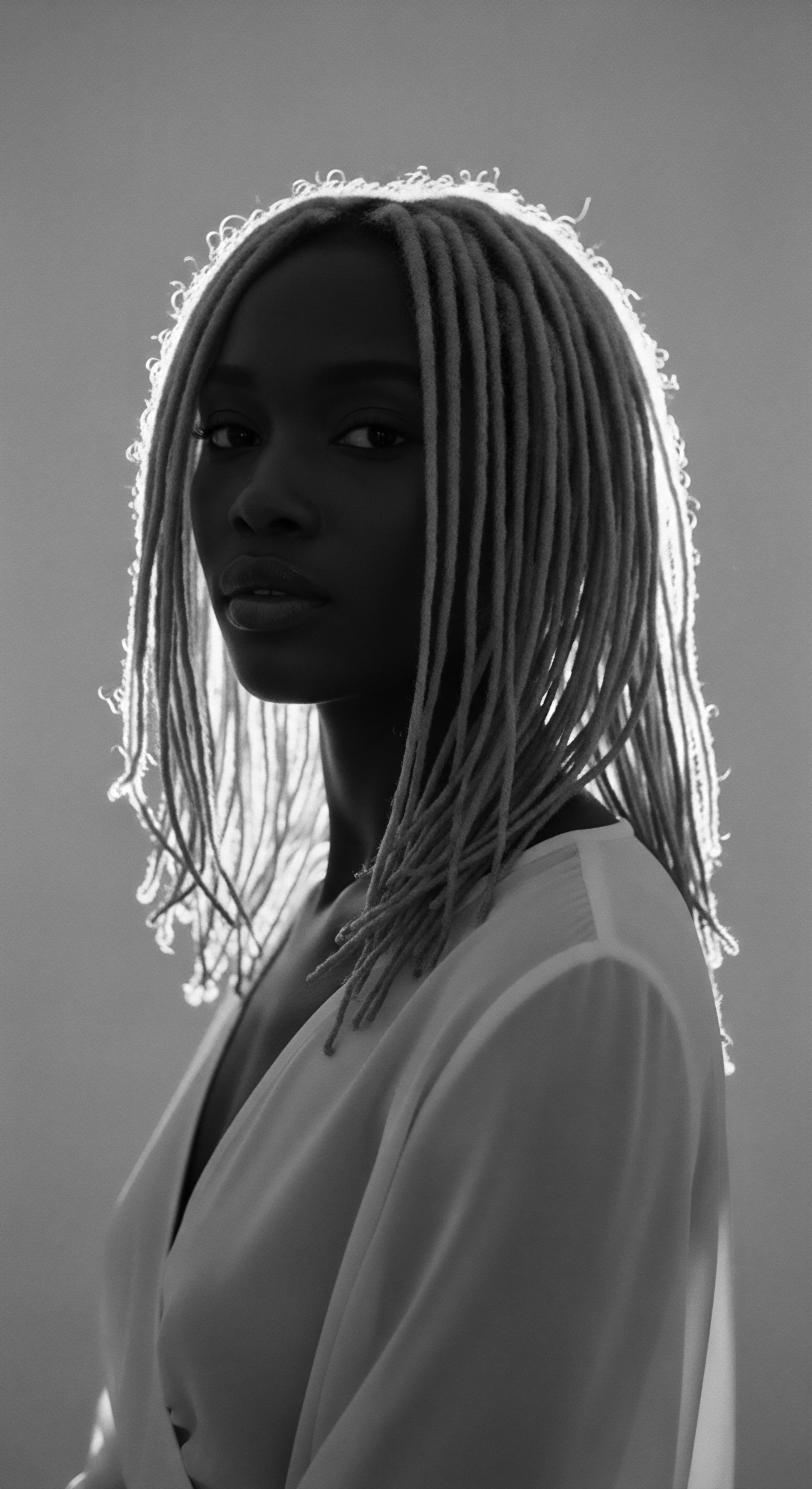
Problem Solving Through Generations
The challenges associated with textured hair, often exacerbated by a lack of understanding or discriminatory societal views, have historically required adaptability and inventive solutions. From managing dryness and breakage to combating societal prejudice, each problem has spurred a response rooted in both practical necessity and a will to retain identity.
The collective knowledge of Black and mixed-race communities has consistently addressed hair concerns through shared wisdom. For instance, the fight against hair discrimination in professional and educational settings continues to this day. Research from the CROWN Act, a movement advocating for legal protection against discrimination based on hair texture and style, highlighted that 41% of Black women reported altering their hair for job interviews, and 54% believed they should straighten their hair for such occasions.
This statistic underscores the ongoing pressure to conform to Eurocentric beauty standards. However, the movement to legally protect natural hair, like the CROWN Act legislation in various US states, stands as a modern form of resistance, building upon centuries of struggle for the right to wear one’s hair in its natural state without penalty.
Traditional remedies for scalp health, often involving herbal rinses and oil massages, offered solutions long before the advent of modern dermatology. These practices addressed concerns like flaking or discomfort, emphasizing a preventative and symbiotic relationship with the body. The communal sharing of these remedies and techniques cemented bonds and preserved a system of care that prioritized well-being over imposed norms. These methods continue to provide frameworks for textured hair problem-solving, blending ancient insights with scientific validation.
The enduring presence of textured hair, often viewed as a political statement simply by existing in its natural form, is a testament to the unyielding spirit of Black communities. The continuous journey of care, preservation, and public assertion of its beauty solidifies its position as a living symbol of resistance, relayed from one generation to the next.
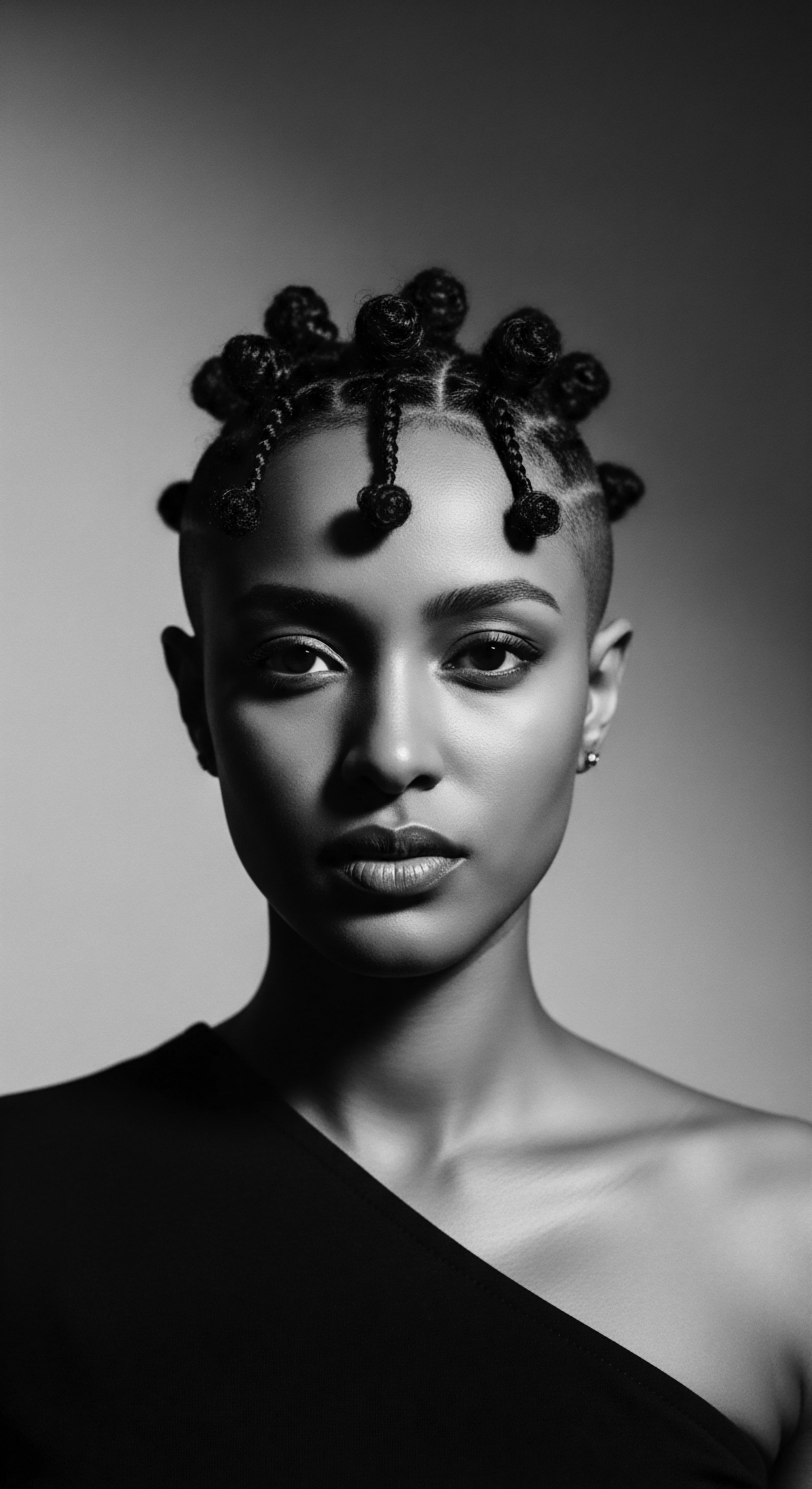
Reflection
The coiled strands, the intricate patterns, the vibrant crowns – textured hair is more than fiber and follicle. It stands as a living document, a testament to the enduring spirit of Black people across time and lands. This profound connection, rooted in ancient African societies and forged through generations of resistance, whispers a story of resilience, creativity, and self-definition. From the subtle defiance of hidden seeds within braids during enslavement to the bold affirmations of the Afro during civil rights struggles, textured hair has consistently served as a public and private declaration of identity, a rejection of imposed narratives, and a celebration of an ancestral legacy.
To honor textured hair is to honor a heritage of unwavering strength. It is to recognize the intelligence embedded in ancestral practices, the profound meaning in traditional rituals, and the deep wellness that comes from acknowledging one’s authentic self. Each strand, in its unique spiral, carries the echoes of countless journeys, sacrifices, and triumphs. As we continue to learn, share, and celebrate the multifaceted expressions of textured hair today, we participate in a continuous living archive, ensuring that the soul of each strand continues to speak volumes, affirming identity, community, and freedom for all tomorrows.
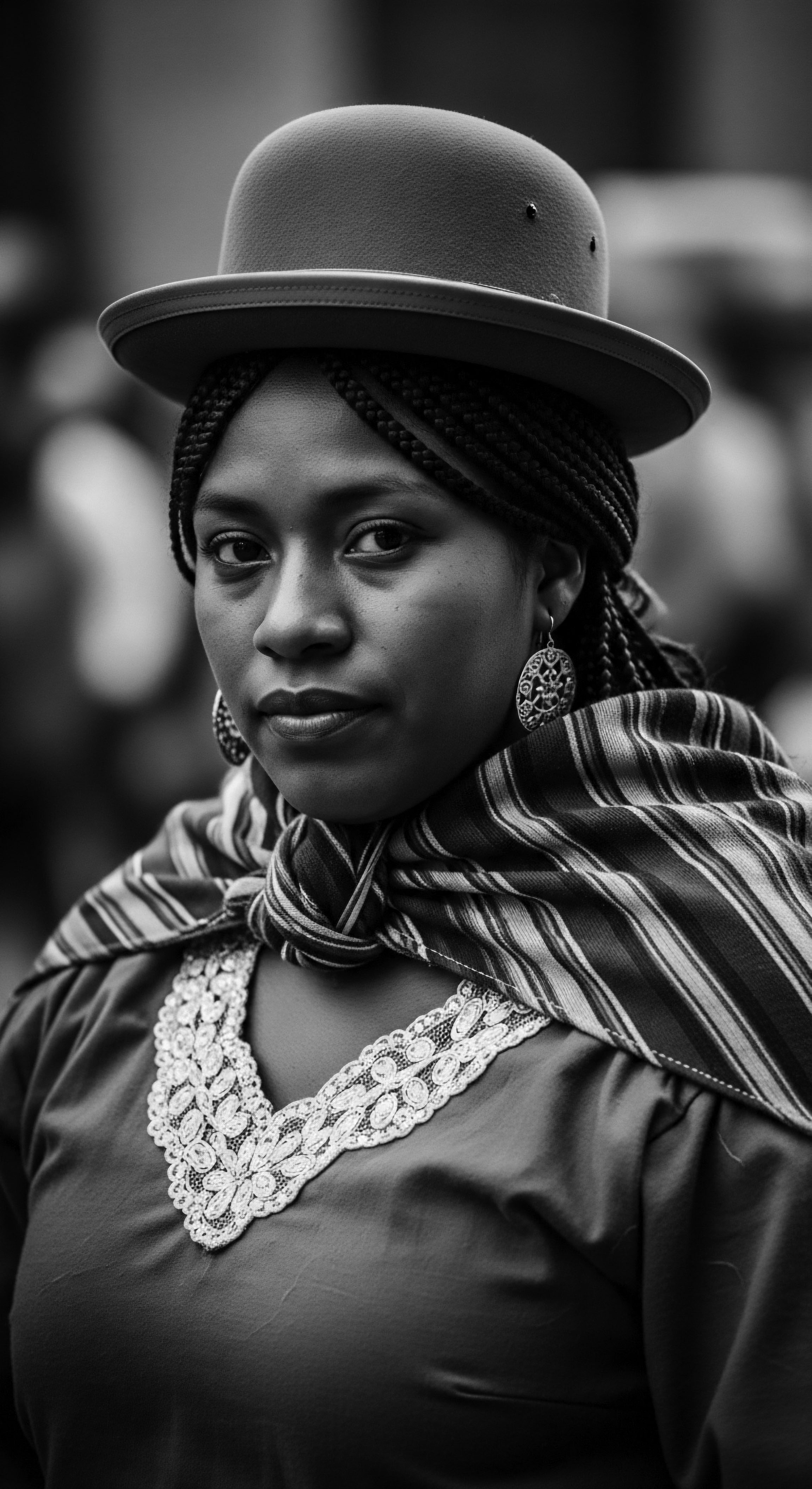
References
- Banks, Ingrid. Hair Matters ❉ Beauty, Power, and Black Women’s Consciousness. New York University Press, 2000.
- Byrd, Ayana D. and Lori L. Tharps. Hair Story ❉ Untangling the Roots of Black Hair in America. St. Martin’s Griffin, 2014.
- Carney, Judith A. “With Grains in Her Hair ❉ Rice in Colonial Brazil.” UCLA Geography.
- Essel, Inyang. Blackwood Gallery exhibition highlights powerful history behind African hairstyle. University of Toronto Mississauga, 2024.
- Matjila, Chéri R. The Meaning of Hair for Southern African Black Women. University of the Free State, 2020.
- Mokoena, H. From Slavery to Colonialism and School Rules ❉ A History of Myths About Black Hair. The Conversation, 2016.
- Omotos, Adetutu. The Symbolism of Hair in Traditional African Culture. Journal of Pan African Studies, 2018.
- Rodriguez, Sylvia. Black Hair Can. Penguin Random House, 2021.
- Rose, Shari. How Enslaved Africans Braided Rice Seeds Into Their Hair and Changed the World. Medium, 2020.
- Weitz, Rose. Rapunzel’s Daughters ❉ What Women’s Hair Tells Us About Women’s Lives. Farrar, Straus and Giroux, 2004.
- White, Shane, and Graham White. Stylin’ ❉ African American Expressive Culture from Its Beginnings to the Zoot Suit. Cornell University Press, 1995.
